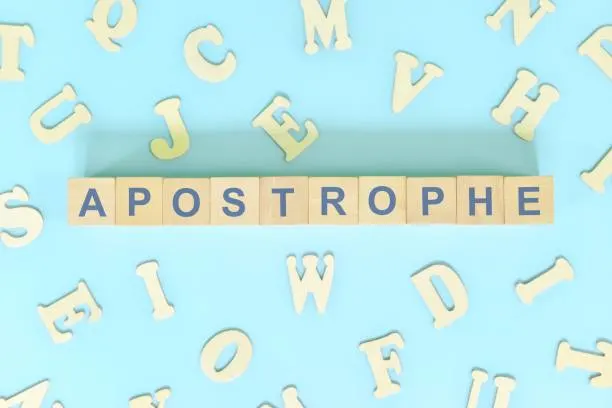Grammar and grammatical rules are essential during conversations and when writing any content. They should be kept in mind for their proper placements.
The interactions between the sentences and the words used are a topic covered by English teachers. They do not rely on affirmatives but rather discuss how to apply them in challenging circumstances.
Grammar mistakes or improper usage obscure the actual issue. Contractions work in the same way. Contractions have a significant role in conversations, making them more accessible and attractive. You must have used and read contractions in many places, specifically in English dramas and novels.
This article uses two common words, “they aren’t” and “they’re not,” to explain their differences. It also provides some basic examples to describe their use and emphasizes their correct usage.
They are used in negative sentences. Both stress something that doesn’t need to be done. In general, “they’re not” is considered more negative as compared to “they aren’t”.
Please keep reading to learn more about the contractions, their types, and the disparities between the two words. It’s necessary to clarify how much difference they have and their exact meaning.
Importance of Contractions and Their Uses
Contractions play an essential part in the English language. They offer ease, especially while speaking, making the terms easier to understand.
But as they are beneficial for a fluent conversational tone, it’s best to refrain from them during professional academic writing.

Even though using them in the writing phase is not recommended, adding them gives a touch of a casual conversation between a reader and a writer. Therefore, your written content’s readability increases, which is beneficial in a few cases.
A novel is the best example of utilizing contractions purposefully. When drafting a book or a play, contractions in conversations might better capture how a character truly speaks. It creates a beautiful picture of the whole story in the reader’s mind.
There are commonly four types and cases where they are applicable:
- When using a subject pronoun with a verb (for example, I’ve, we’ve, you’ll, etc.)
- During a combination of interrogative adverbs and verbs (for example, what’s, where’s, etc.)
- When utilizing verbs with the word “not” (for example, won’t, shouldn’t, wouldn’t, etc.)
- A type of contraction; informal contraction (examples, gonna, moving, etc.)
These contractions shorten the delivery of the word or phrase, making your speech time friendly.
Negative Contractions And The Rule of Contractions
Since this article’s main topic is negative contractions, let’s understand what they are. Similarly, the rules of contractions are essential for their proper usage in daily life and during writing.
Negative contractions are written forms of verbs that have a negative connotation. With “to just be” verbs, you can employ contractions ending in “not.” They also include “not” to turn the verb into a negative.
Rules of Negative Contractions
- Notably, the sentences which appear as statements employ negative contractions.
Example:
Have you searched for a new restaurant for Chinese food?
No, I haven’t.
- There is no gap between the verb and not when using negative contractions.
- There are two ways to form contractions using the verb + negation.
Example:
They’re not returning home today. (They + are)
Today they aren’t returning home. (The abbreviation for “are not”)
- Not every negative construction uses the contraction “n’t”.
Example:
“I do not steal” becomes “I don’t steal.”
I might not show up. It is not possible to contract “may not.”
Differences Between “They’re not” and “They aren’t”
Choosing between “they’re not” and “they aren’t” can sometimes be confusing; so let’s take a closer look at their differences in the table below.
| Features | “They’re not“ | “They aren’t“ |
| Rhythm | It does not stress the opposing side. The rhythm in it is more empathetic. As a whole word, “Not” is present in it. Therefore the situation becomes more stressful. It carries more weight since the “not” is not contracted. | The tone of this phrase is slightly less emphatic. The word emphasizes a negative situation in a low manner. It doesn’t stress much about creating negativity in the situation. |
| Placement | In reading, this form is preferable to make the reader think that it is something ongoing. Since it creates a stressful situation, it allows writers to highlight this part, providing a space for readers to read carefully. | This form is preferable when for the thing that has just been said. People use it clearly for this purpose. |
| Usage | “They’re NOT” seems to place more attention on the fact that an action, wish, or thinking will not be carried out than on the person who will not be carrying it out. | This word is primarily used in day-to-day conversations. It’s important to understand that whenever used, it doesn’t feel as strong as they’re not, so its correct usage is seen in informal writing. |
Examples
- “They’re not” going to attend the party, but they made arrangements for it.
- “They aren’t” going to the festival.
- “They aren’t” receiving any weather updates.
- “They’re not” updating us about the next meeting.
- “They’re not” doing anything for this noble cause.
- “They’re not” going to add this in the following year’s report.
- “They’re not” pointing at anyone. They are just addressing the whole community.
- “They’re not” taking any actions against the culprits. They must take it.
- “They’re not” receiving payments for the new projects.
- “They aren’t” going to get the full attention for their ultimate need.

Let’s Understand Something Different
Understanding grammar and its use in literature is important. It’s time to learn and focus on something new including the reviews of people using the topic’s phrases.
The following points need to be understood:
- Both of them are pretty dissimilar. One liked “They’re not.” Another liked “They aren’t.” They both have similar pronunciations when speaking. Both idioms imply “they are not.”
- While an action, wish, or thought may be carried out, “They’re not” tends to underline that “They” are the agents that cause it to be so.
- While an action, wish, or thought may be carried out, “They aren’t” tends to underline that “They” won’t be the agent that causes it to be so.
- The distinction is primarily one of language. “They’re not”, “they aren’t”, “it’s not”, “it isn’t”, etc., are examples of terms people typically shorten when they talk. The reverse is what happens when they write.
- Typically, relying upon one depends on reading, then comparing which looks better in which situation. Feel the sound of both.
- The only fundamental difference is the presence of one vowel, an apostrophe, and spacing. When read aloud as single sentences, various syllables are likely to receive emphasis.
Let’s Grab the Sense Through Conversation
It’s essential to understand their context through dialogues. They are a more significant way to grasp these two words’ actual scenario and meaning.

Conversation
This is a conversation between two people talking about colleagues and whether they would attend the annual awards ceremony or not.
Question: Did I hear you say they will attend the ceremony?
- “They aren’t” going to attend the ceremony
- “They’re not” going to participate in the ceremony
The first response implies that the responder simply confirms what the asker already knows.
The second response means that the respondent emphasizes that they are not ensuring that the misunderstanding does not persist because the possibility could be that the questioner misheard or misunderstood a previous interaction.
Conclusion
- Syntax and grammatical rules are crucial when speaking and writing any information. They ought to be considered for their appropriate placements.
- Correct grammar is essential in generating ideas and describing scenarios. It also defines the tone and sense of the delivery.
- Improper or error complete grammar doesn’t display the exact situation. The same goes for contractions.
- The English language relies heavily on contractions. They provide comfort, especially when speaking, which makes the terms simpler to comprehend.
- Contraction is a common word you must have used and read, especially in English plays and books. This article explains the distinctions between two commonly used terms, “they aren’t” and “they’re not.”
- They don’t have a huge difference; however, the tone issue and the context in which they need to be placed most prominently.
Other Articles
- Difference Between Michael And Micheal: What Is The Correct Spelling Of That Word? (Find Out)
- What Is The Difference Between Employees And Employee’s?
- What Is The Difference Between “I got stuck” And “I’m stuck”?

